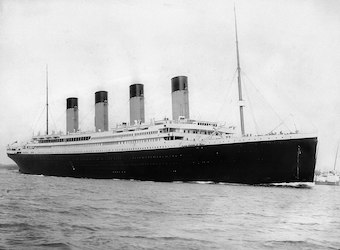
RMS Titanic. A British ocean liner that sank in 1912 as a result of striking an iceberg on her maiden voyage from Southampton, England to New York City.
Of the estimated 2,224 passengers and crew aboard, 1,496 died, making the incident one of the deadliest peacetime sinkings of a single ship.
Titanic, operated by the White Star Line, carried some of the wealthiest people in the world, as well as hundreds of emigrants from the British Isles, Scandinavia, and elsewhere in Europe who were seeking a new life in the U.S. and Canada. The disaster drew public attention, spurred major changes in maritime safety regulations, and inspired a lasting legacy in popular culture.
RMS Titanic was the largest ship afloat upon entering service and the second of three Olympic-class ocean liners built for the White Star Line. The ship was built in Belfast. Titanic was under the command of Captain Edward John Smith, who went down with the ship.
The first-class accommodation was designed to be the pinnacle of comfort and luxury. It included a gymnasium, swimming pool, smoking rooms, fine restaurants and cafes, a Victorian-style Turkish bath, and hundreds of opulent cabins.
A high-powered radiotelegraph transmitter was available to send passenger “marconigrams” and for the ship’s operational use. Titanic had advanced safety features, such as watertight compartments and remotely activated watertight doors, which contributed to the ship’s reputation as “unsinkable”.
i was equipped with 16 lifeboat davits, each capable of lowering three lifeboats, for a total capacity of 48 boats. Despite this capacity, the ship was scantly equipped with a total of only 20 lifeboats. Fourteen of these were regular lifeboats, two were cutter lifeboats, and four were collapsible and proved difficult to launch while the ship was sinking.
Together, the 20 lifeboats could hold 1,178 people — roughly half the number of passengers on board, and a third of the number the passengers the ship could have carried at full capacity (a number consistent with the maritime safety regulations of the era). The British Board of Trade’s regulations required 14 lifeboats for a ship 10,000 tonnes. Titanic carried six more than required, allowing 338 extra people room in lifeboats. When the ship sank, the lifeboats that had been lowered were only filled up to an average of 60%.